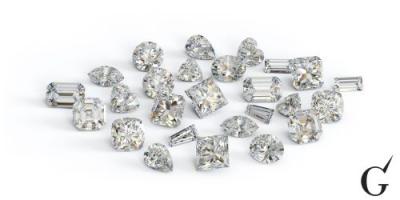White Sapphire Engagement Rings: A Journey Through Time
Table of Contents
Introduction
When it comes to engagement rings, diamonds have long been the undisputed king of precious stones. However, the rise in ethical concerns, along with a growing interest in alternative options, has paved the way for other gemstones to shine. One such gem that has seen a steady rise in popularity is the white sapphire. In this article, we'll explore the fascinating history of white sapphire engagement rings, tracing their journey from ancient lore to modern-day chic.
The Origins of Sapphire
The word "sapphire" comes from the Greek word 'sappheiros,' which originally referred to the blue gemstone lapis lazuli. The sapphire, as we know it today, is a form of corundum, second only to diamonds in hardness. While blue sapphires are perhaps the most famous, sapphires actually come in a range of colors—except for red. White sapphires are essentially sapphires that are colorless and transparent.
Ancient Beliefs and Symbolism
Sapphires have a rich history, with ancient texts from various cultures mentioning them. The gemstone has traditionally symbolized wisdom, virtue, and good fortune. In medieval Europe, it was believed that sapphires cured eye diseases and preserved chastity. White sapphires, due to their clear, pure appearance, were often associated with clarity of thought and purity of soul.
The Advent of White Sapphire Engagement Rings
While sapphires have been used in jewelry for centuries, their use in engagement rings is relatively new. It gained prominence mainly in the 20th century when people began looking for diamond alternatives that were ethical and more affordable. White sapphires, with their close resemblance to diamonds and their less prohibitive cost, became a popular choice.
Modern-day Popularity
Today, white sapphire engagement rings are cherished for their unique properties and ethical sourcing. They are particularly popular among millennials and Gen Z couples who are conscious of the social and environmental impacts of their choices. White sapphires are not only a budget-friendly alternative to diamonds but also offer a distinct character, with a softer glow and a less 'brilliant' sparkle.
Customization and Design
White sapphire engagement rings are often featured in vintage settings that highlight the gem's unique sparkle. They're also commonly set in modern, minimalist designs, where the focus is on the gemstone itself. The hardness of white sapphire makes it a versatile choice for various ring designs, from the classic solitaire to intricate halo and pave settings.
The Ethical Choice
One of the most compelling aspects of choosing a white sapphire engagement ring is its ethical considerations. Sapphires are more abundant than diamonds and are often sourced from smaller, less industrial mines, which generally have less environmental impact. Additionally, the option for lab-grown white sapphires offers another layer of ethical sourcing.
Conclusion
White sapphire engagement rings provide a meaningful, beautiful, and ethical alternative to traditional diamond rings. Their rich history and unique properties make them a choice that reflects both timeless elegance and modern sensibilities. As couples increasingly look for options that align with their values without sacrificing beauty or durability, white sapphire engagement rings stand as a testament to the evolving nature of love and commitment.











